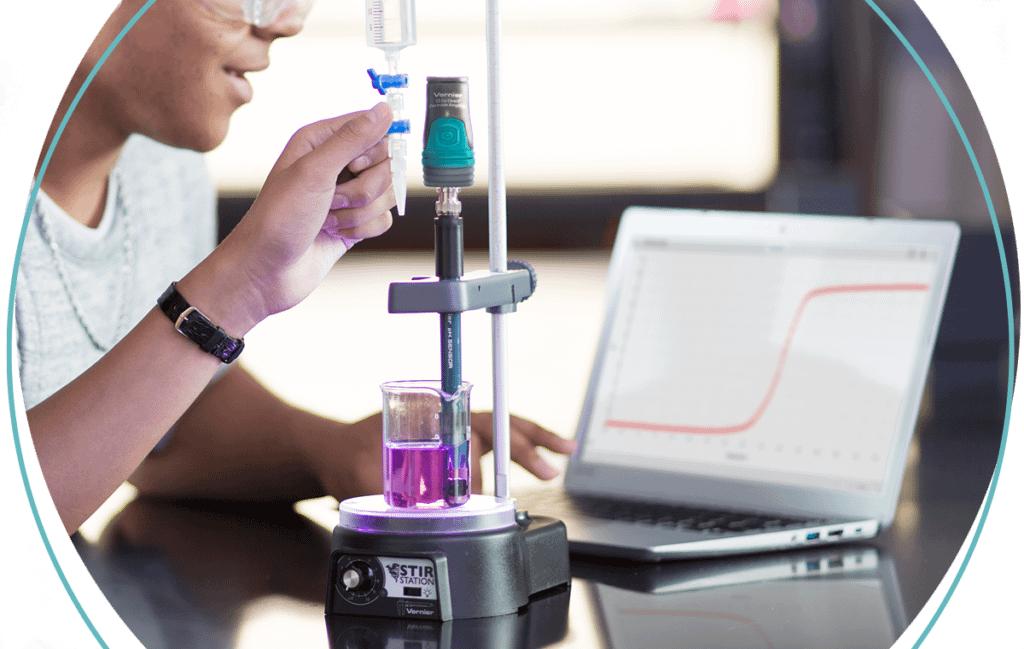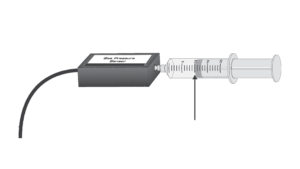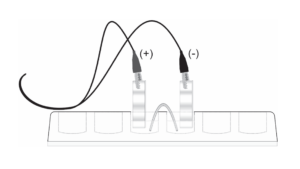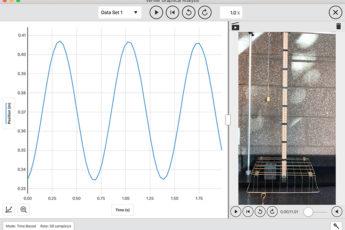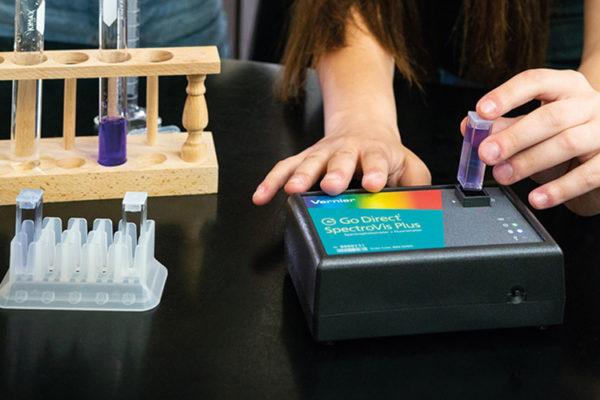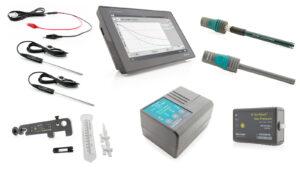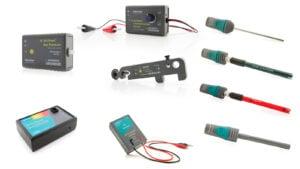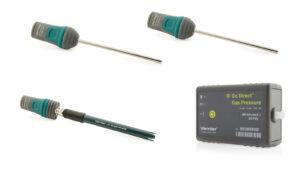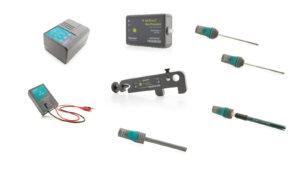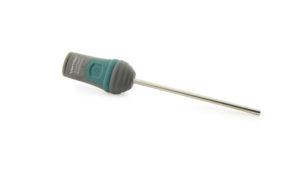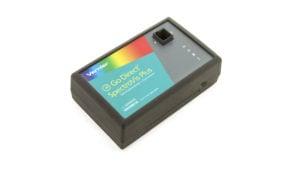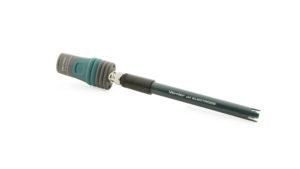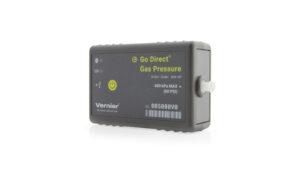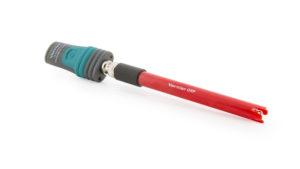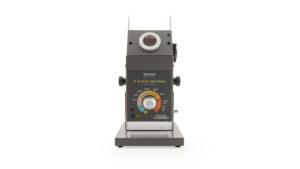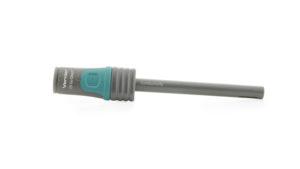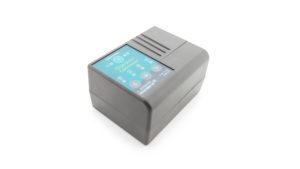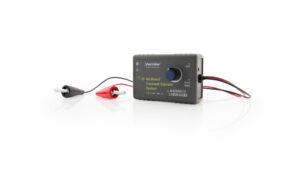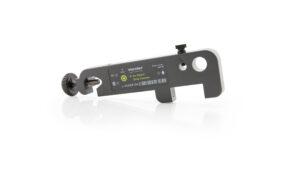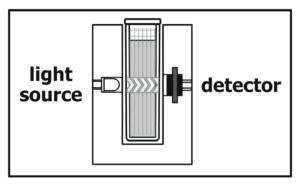
Beer’s Law Investigations
The primary objective of this Preliminary Activity is to determine the concentration of an unknown copper (II) sulfate solution. You will use a Colorimeter (a side view is shown above). In this device, red light from the LED light source will pass through the solution and strike a photocell. The CuSO4 solution used in this experiment is blue. A higher concentration of the colored solution absorbs more light (and transmits less) than a solution of lower concentration. The Colorimeter monitors the light received by the photocell as percent transmittance.
You will prepare five copper (II) sulfate solutions of known concentration (standard solutions). Each solution is transferred to a small, rectangular cuvette that is placed into the Colorimeter. The amount of light that penetrates the solution and strikes the photocell is used to compute the absorbance of each solution. When you graph absorbance vs. concentration for the standard solutions, a direct relationship should result. The direct relationship between absorbance and concentration for a solution is known as Beer’s law.




